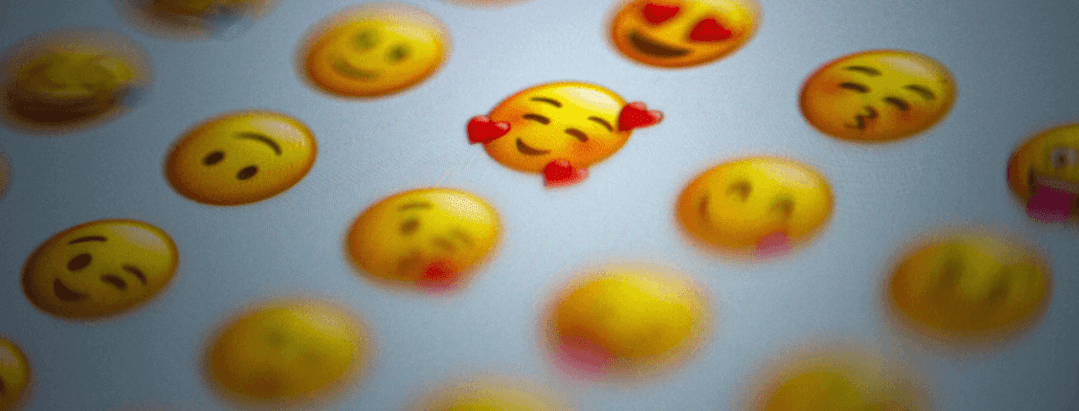Emoji Interpretation
Emojis are the new universal??? language, breaking cultural language barriers ? and proving an emotive and fun way for individuals to express themselves and enhance their communication?. However, with the millennial?? fad being passed onto the wider community ????, they pose some serious problems in terms of their interpretation, particularly in legal ⚖️ cases ? involving sexual harassment ?, workplace issues, allegations of threatening behaviour ? and murder ?. With a lack of guidance on how the court ??⚖️should interpret emojis ??? as evidence ?, many cases ? have seen parties face harsh legal ⚖️consequences for simply using an emoji to communicate ? a message ?.
Emoji: A small digital image or icon used to express an idea or emotion
The emoji fad has turned into a lot more than just fun, simplistic, emotive characters. Today, emojis are a new language, changing the way people interact and communicate on a daily basis. They are able to break down communication barriers across cultures and enhance thoughts, feelings and emotions in a digital world. Not only are millennials implementing them into every text and social media post, but they have been adopted by older generations and businesses.
Emojis seem to be popping up everywhere; text messages, emails, Facebook, Twitter and Instagram posts and strangely enough have become increasingly important as evidence in courtrooms. This has particularly increased in sexual harassment cases and workplace dispute matters.
While the use of emojis seems like harmless fun the use of and interpretation of emojis in the wrong context could cost you. But how?
The interpretation of an emoji differs depending on a number of factors, whether it be the context of the message, the relationship with the recipient and the text surrounding the emoticon. In today’s creative, digitalised world, a vegetable is not necessarily a vegetable. The common use of ? ? is usually sent to convey a sexual meaning, with a ? also conveying another body part of sexual nature.
Emojis in the workplace
Emoji use is also becoming increasingly popular around the workplace as they are becoming more socially acceptable. Users are also finding a number of benefits for their use in the workplace. The most substantial being that people perceive their colleagues to be more approachable and friendly if they have used emojis to communicate.
A common example of the use of emoji’s within workplace environments is sending a thank you message to a colleague with the addition of ? ?. The emojis, in this context, are used to really emphasise the persons appreciation. On the flip side, such emojis have the potential to offend a colleague which may possibly land you in a court defending sexual allegations.
Court Interpretation
The varied interpretation of these tiny and seemingly unimportant icons is becoming challenging in the eyes of the law.
The case of Colwell v Sydney Containers International Container Terminals Pty Limited[1] presented facts relating to the use of emojis in a workplace environment. Mr Colwell received a sexually explicit video from a friend with the following text:
Need your address to send your Early Christmas box mate ?.. I Only usually send stuff like this 2 my bloke mates [name of friend], But sure you’ll Handle it, Lol ?.
Mr Colwell forwarded both the video and the text communication to a number of Facebook friends, 19 of which were his colleagues. While a number of sexual harassment allegations arose from the conduct, the court ultimately found that the dismissal of Colwell was not harsh, unjust or unreasonable.
The case of Rush v Nationwide News Pty Ltd[2] provided further analysis on how the court may interpret emoji’s in legal proceedings. The case concerned allegations of sexual harassment in the workplace and one of those allegations was based upon a text which was perceived as sexual in nature by the complainant. The text, sent by Mr Rush to a female colleague stated:
…but I was thinking of you (as I do more than is socially appropriate) ?…
The court rejected that the text was sexual in nature and interpreted the text, inclusive of the emoji as ‘playful and humorous’. This was due to the friendly and familiar relationship of the parties, as well as the context of a substantial number of previous texts between them. Mr Rush’s playful nature was also referred to and the court ultimately found that the emoji did not involve ‘inappropriate innuendo’.
The Australian courts seem to be reluctant to the interpretation of emojis, with many judgements simply outlining them in the evidence, but giving no legal judgement or thought to what they may interpret. This clearly indicates a lack of direction, or perhaps even a general attitude of the unimportance of emoji use.
Fad or future?
The absurdity of the issue of emoji interpretation in the courts is baffling to say the least. Five years ago, there would be no such issues and even considering this future complexity would be non-existent.
So next time you contemplate using an emoji, personally or within the workplace, remember: a picture is worth a thousand words and can be interpreted in a variety of ways.
[1] [2018] FWCSum 174
[2] (No 7) [2019] FCA 496
This Alert is intended as general information only. It does not purport to be comprehensive advice or legal advice. Readers must seek professional advice before acting in relation to these matters.

